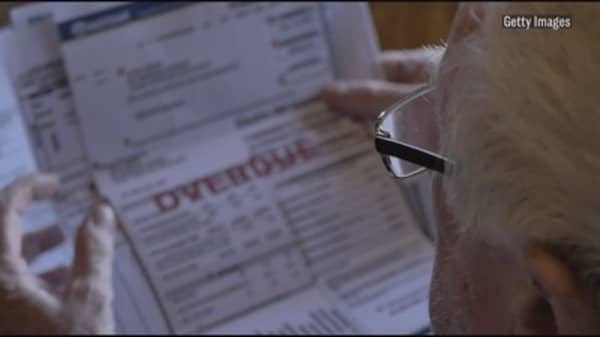Life doesn't always go as planned. Money you earmark for retirement may be needed for an emergency expense you never planned for when you made the investment.
A child for whom you created an education fund may choose to forgo additional schooling after high school. In both cases, you've saved money in special accounts with special rules. What are the consequences when the money in those plans ends up being used for other purposes?
Qualified retirement and college savings plans
The main types of qualified tax-deferred retirement plans used today are traditional individual retirement accounts and 401(k) plans. Briefly, these plans allow you to save before-tax money in a special account. You save for retirement while lowering your current income-tax bill because you expect to be in a lower tax bracket in your future retirement years.
The main type of qualified college savings plan is the 529 plan. This plan lets you save after-tax money in a special account. You save for your child's education in an account that will allow the gains made in the account to go untaxed if they are used for qualified education expenses. The term "qualified" means "subject to restrictions."
Why these account types are available
The U.S. government wants to encourage citizens to save for retirement and for advanced education, and one of the best incentives for saving is a tax break. These plans work differently in how the investor ultimately gets the tax break. In a traditional IRA or 401(k), the tax break comes at the beginning on the contributions the saver makes that year.
For example, assume you contribute $5,000 to a traditional IRA or 401(k) plan in 2017 and you make $50,000 in wages and other income that year. When you do your taxes prior to the April 15, 2018, deadline, you will be taxed only on $45,000 of income because you deferred $5,000 that year into your qualified retirement account. Roth IRAs and Roth 401(k) plans have a different tax treatment.
More from Advice and the Advisor:
7 retirement-planning mistakes to avoid
How to avoid costly 401(k) rollover mistakes
7 ways to make sure you don't outlive your savings
The 529 plan offers a different kind of tax break. In this account, the money that is contributed to the plan in a particular year is before-tax money that does not reduce your taxable income. In other words, if you contribute $5,000 to your child's 529 plan in 2017 and you make $50,000 in wages and other income that year, your taxable income for 2017 is still $50,000.
When you do your taxes in the early part of 2018, you will still be taxed on $50,000 of income because the $5,000 did not reduce your taxes in 2017. For a 529 plan, the tax break comes years later, when your child heads to college. Assume that over 12 years of his or her growing up, you contributed $30,000 to your child's 529 plan. The $30,000 you invested earned $5,000 in capital gains. When you start to take the money out of the 529 plan to pay for qualified college costs, that $5,000 of gains comes out without incurring tax.
Withdrawing from IRA, 401(k) and 529 plans
If you need to take money out of your traditional IRA or 401(k), which is also called taking a distribution, you will need to pay taxes on that money. If you are younger than age 59½, you'll also pay a 10 percent penalty. So, for example, if you are 40 years old and decide to withdraw $50,000 from your traditional IRA or 401(k), you will add $50,000 to your taxable income for that year.
Additionally, you actually only get $45,000 in usable cash because of the 10 percent penalty of $5,000. There are special situations that can affect these requirements, but in general, that's how an early distribution works.
One of the biggest worries about the 529 is what will happen if your child decides not to go to college or your child gets a full scholarship to college. Would you lose the money? First of all, unlike the traditional IRA or 401(k), you can remove the amount you contributed to the 529 plan without penalty or tax consequences.
For the 529, any contributions to the account will be returned with no tax levy (because 529s are funded with post-tax dollars) and no penalty any time (Per the IRS: "The part of a distribution representing the amount paid or contributed to a QTP doesn't have to be included in income. This is a return of the investment in the plan.")
On the other hand, just like the traditional IRA or 401(k), the earnings made in the accounts would be subject to taxes — at your tax rate, since you are the account owner — and a 10 percent penalty if they weren't used for qualified education expenses.
"In the tax world, very little income escapes taxation, so it's a great deal to use one of these plans."
The money you save in a 529 plan can be used for qualified higher-education expenses, which include tuition and fees, room and board, books and required supplies and equipment (including computers and internet) required for enrollment in or attendance at an eligible higher-education institution.
If your child earns such strong scholarships that you can't use up the 529 plan earnings, you can take a "scholarship exception," where you can take a nonqualified withdrawal up to the amount of a scholarship; although you will pay taxes on the earnings, you won't pay the additional 10 percent penalty that's imposed on a nonqualified withdrawal.
Conclusion
Traditional IRA or 401(k) and 529 plans can be smart accounts for you and your family members to set up and contribute to. In the tax world, very little income escapes taxation, so it's a great deal to take advantage of one of these plans.
(Editor's Note: This article originally appeared at Investopedia.com.)
— By Kathryn Hauer, financial planner with Wilson David Investment Advisors












